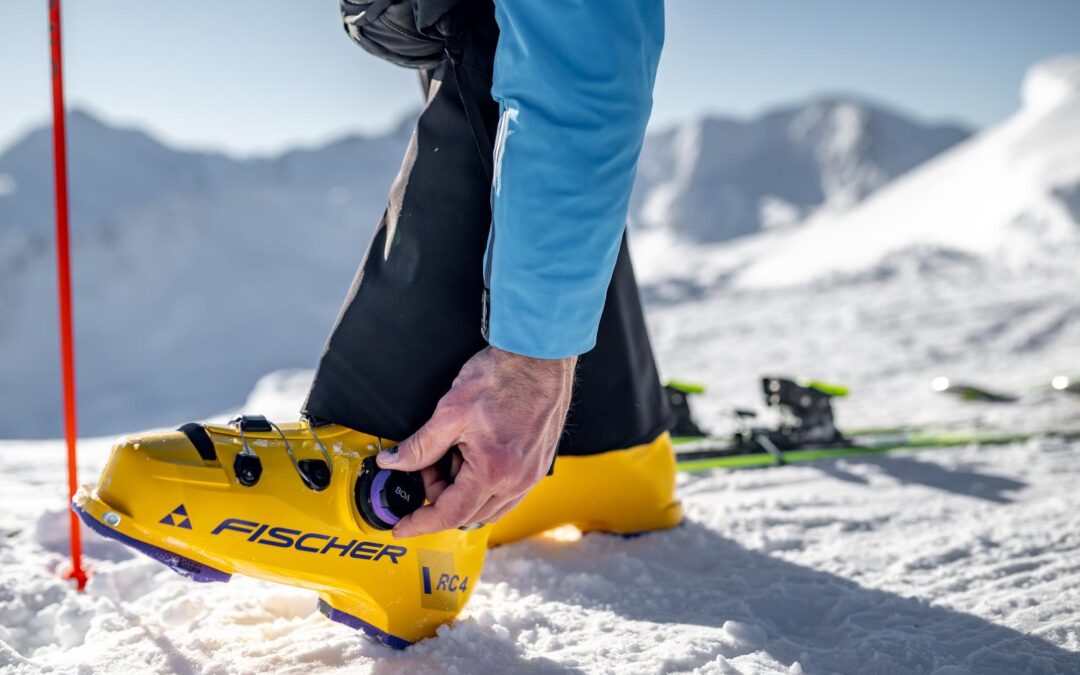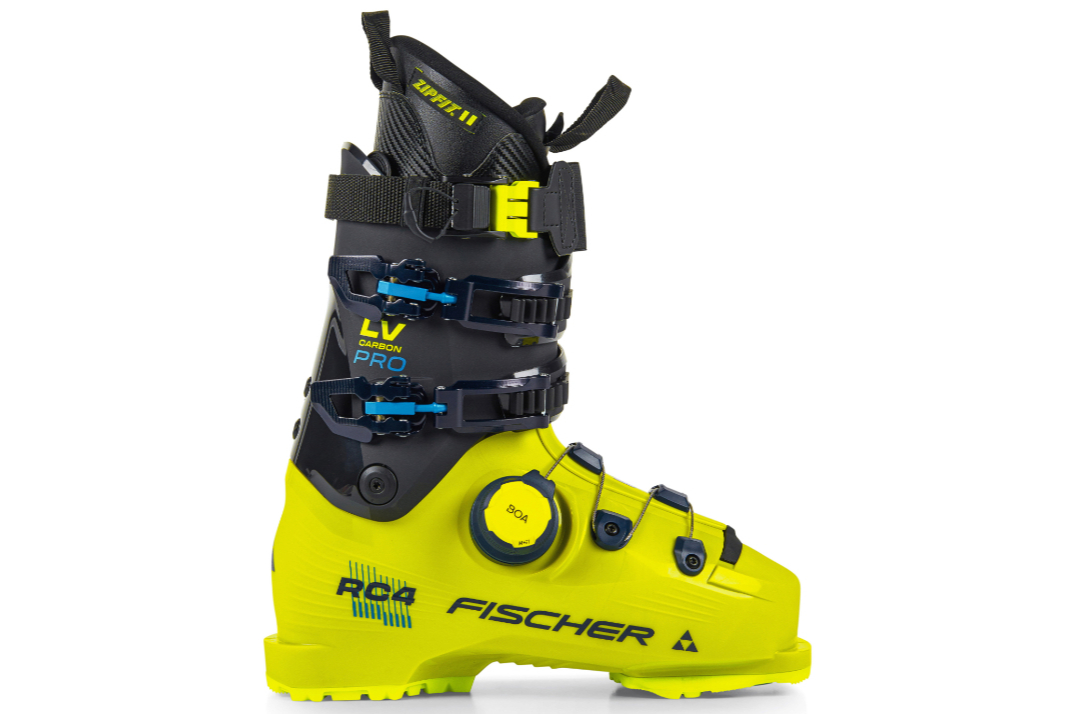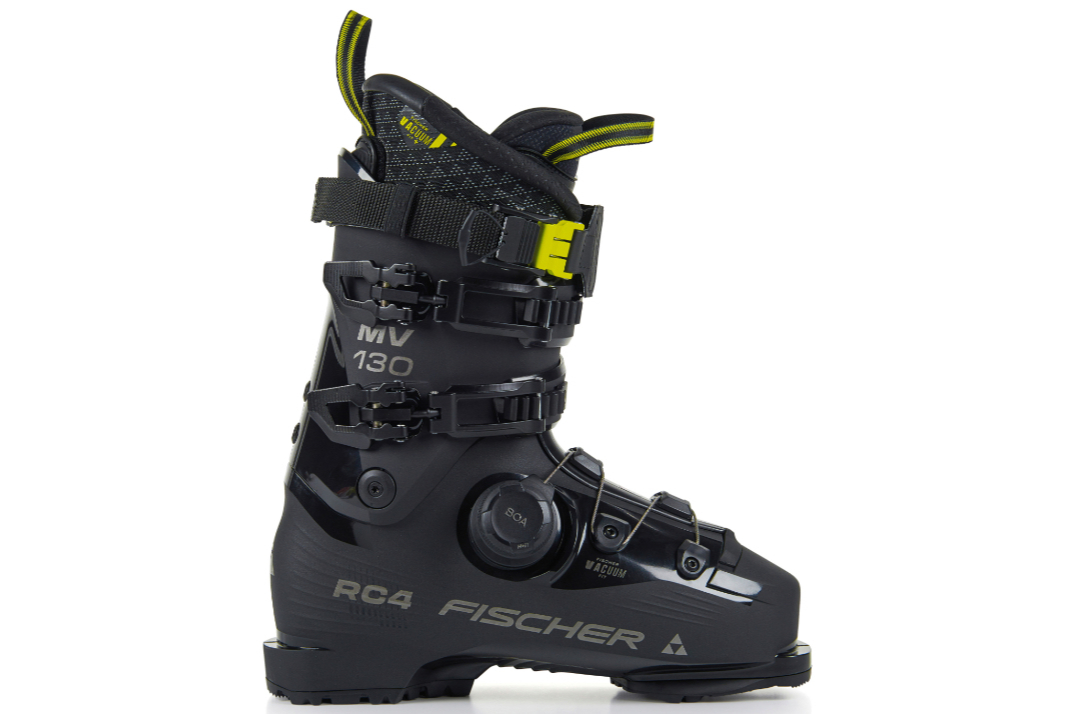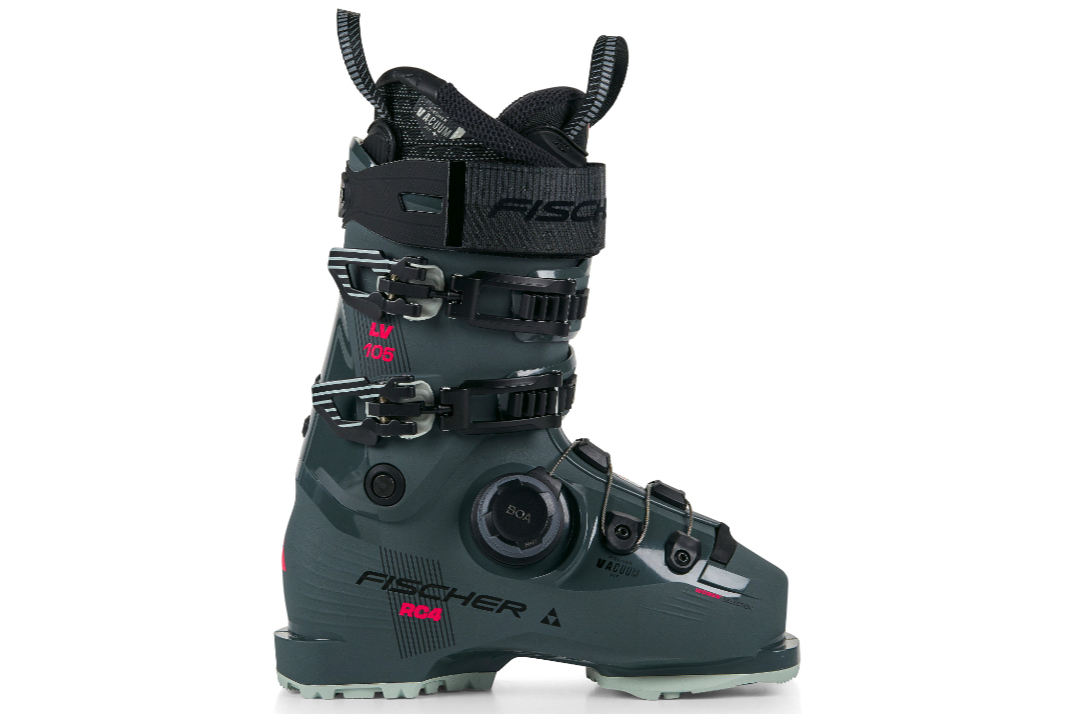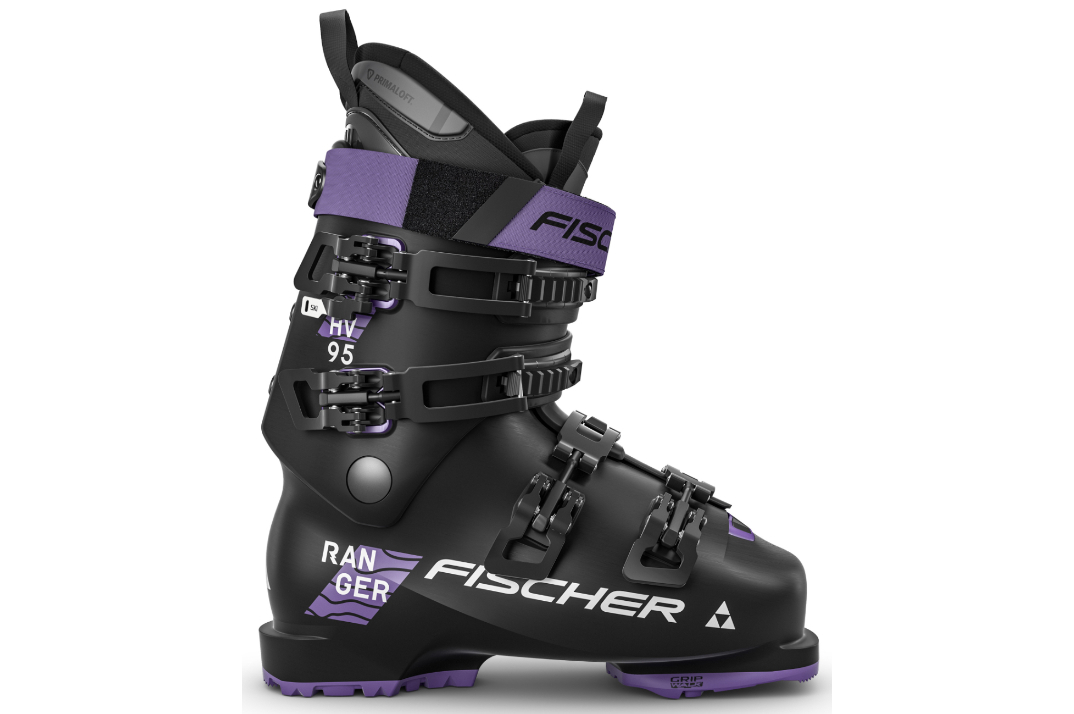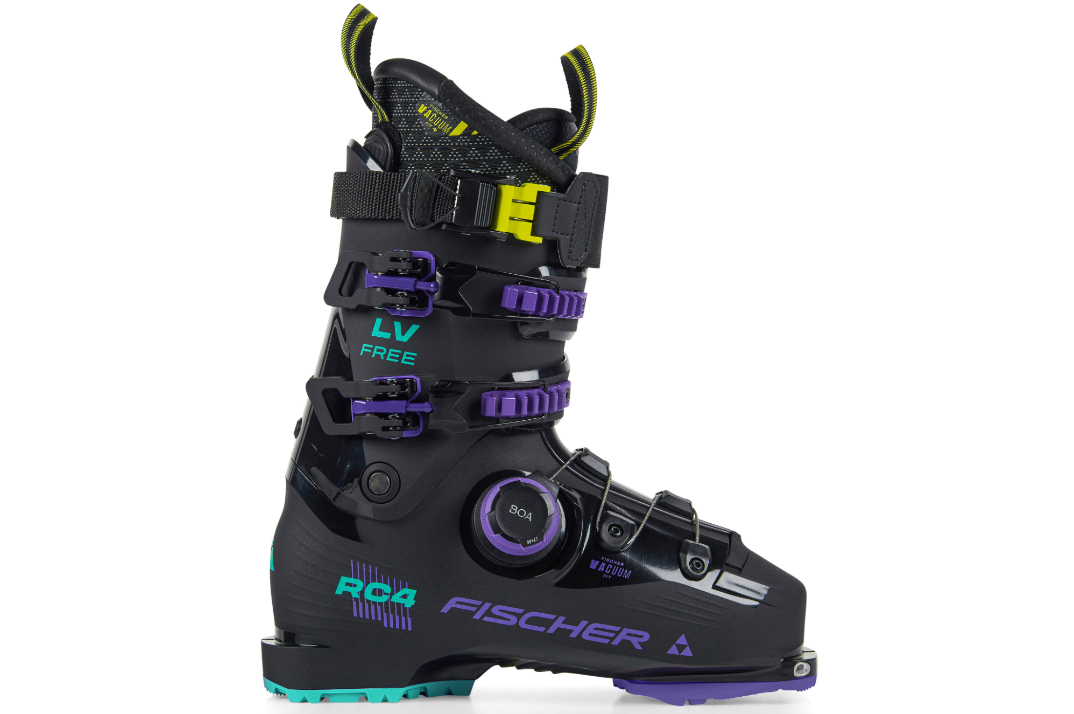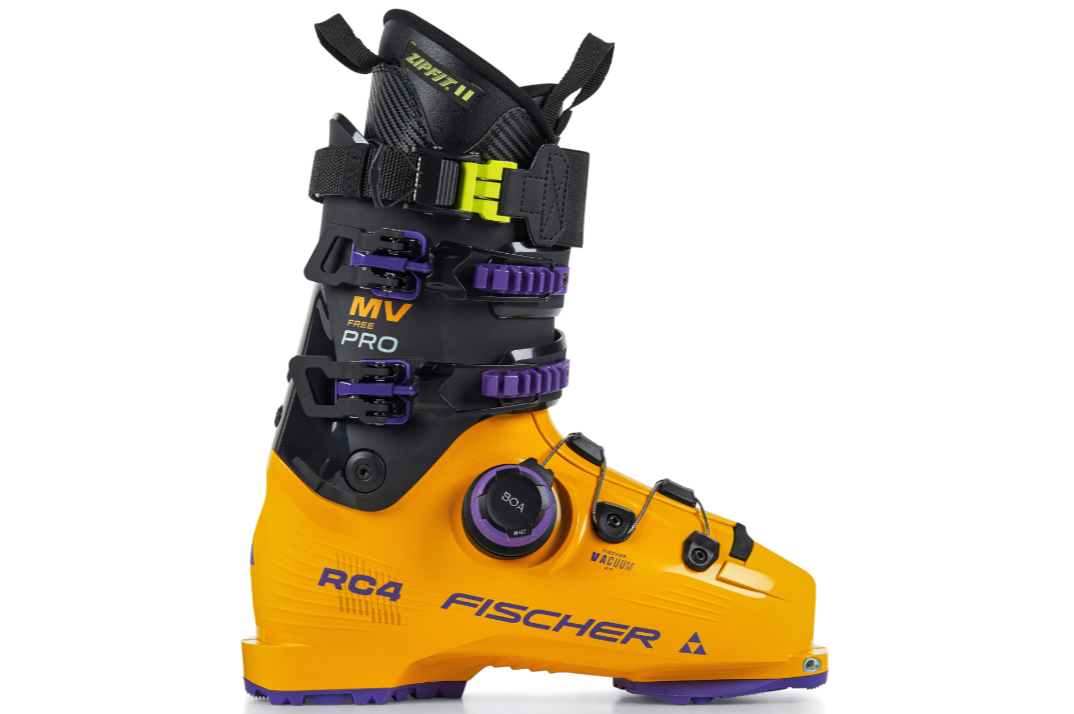Fischer had a long and illustrious history as a ski maker before they decided to jump into the boot pool, despite said pool already being awash with brands. The focus of their debut models was an abducted (toes-out) stance, a clever idea it slightly overcooked, leaving some test pilots feeling like they were traveling in a downhill herringbone.
Undeterred by the difficulties of getting traction in an over-served market, Fischer pressed on, tinkering with their stance and story until several years ago they went all-in on a fancy new system for custom molding the shell, Vacuum Fit. Vacuum technology had been part of Fischer’s manufacturing expertise for many years, so transferring this concept to ski boots may have been an easier step for Fischer to imagine than for other, tradition-bound brands.
Vacuum Fit was such a hit with specialty shops it enabled Fischer to steal the limelight from industry leader Salomon, even though Salomon was first to market with a shell-molding technology of their own called Custom Fit. The big deal about Vacuum Fit was that it didn’t just expand the shell (although it could); it could also bring it closer to the forefoot. Even the one-in-a-thousand shops with a history of boiling boots to modify them never had the means of reducing shell volume all around the forefoot like Vacuum Fit.
Like many first-of-their-kind innovations, Vacuum Fit didn’t get everything right immediately. The biggest limitation was it didn’t have much effect on the critical rear foot, but a second-generation Vacuum station corrected this oversight. Today, the Fischer Vacuum is a Full Fit process, and still the only heat molding technology that facilitates reducing shell volume.
Six years ago, Fischer augmented its point-of-sale technology with a podium that takes a 3D scan of the foot and lower leg, the better to match the skier to the optimal Fischer boot model. A similar scanning technology is also available in a smartphone app so skiers can scan themselves.
With the arrival of a worldwide pandemic, the ability to read a skier’s foot and ankle area in precise detail without the bootfitter touching the customer has become an attractive selling point. Even if only a few shops adopt the Fischer Scan-Fit system, the exponential expansion of Fischer’s data collection points will increase the accuracy of its lasts, a significant contribution to their boot R&D efforts.
Following a season of relatively little model turnover, 2020 was a banner year for new boot models chez Fischer. RC4 Podium GT introduced a new series of race clones that slipped into the Fischer line just below its trio of real-deal (92mm last) RC4 Podium monoblock race boots.
Four years ago, Fischer bolstered its non-race collection with the introduction of RC4 The Curv GT, a sleek new chassis built on a 96mm last. Much lighter (1840g) than a Podium race boot, The Curv GT was the first boot to take advantage of Fischer’s data base of foot scans, resulting in a more accurate initial fit. The ScanFit® Last became a stock feature of the 2023/24 collection.
The big news at Fischer six years ago wasn’t about customization as much as it was about a brilliant new backcountry boot, Ranger Free. When the first Ranger Free appeared at the Masterfit Boot Test in 2018, it was the belle of the ball, blowing testers away with its agility and snow feel. This ultralight (1600g), hike-mode model came in a medium (99mm) last and 3 different flexes for men and two for women, all equipped with Dynafit-approved tech inserts. Fischer capitalized on the warm reception given the Rangers by extending the clan five years ago with Ranger One, a wide (101mm) model likewise equipped for hiking. A little heavier (1850g) than the Ranger Free, the Ranger One lower shells could be Vacuum molded to alter shell volume by +/-3mm.
What makes Fischer’s strong move into the backcountry domain so significant is how well Ranger and Ranger One perform when you’re flying downhill. They’re precise, reactive and most all, more close fitting than the RC4 Vacuum boots that once occupied the center of Fischer’s line. After skiing in the RC4 Curv 130, the Ranger 130 feels like it was made for another sport. Which it was – namely, Alpine Touring – only it skis so damn well it’s a pity to limit its life to endless slogging uphill.
The Ranger isn’t the first AT-compatible boot with real-deal ski-ability, nor is it the only one of its ilk to debut six years ago, but it does represent a new twist in the helix that blends the Alpine and AT genomes. All the security of an Alpine shell is there, with snow feel that has to be skied to be appreciated.
The GripWalk soles that are now standard issue on resort boots infiltrated the Alpine world from backcountry skiing. It’s looking like better traction won’t be the only technology to migrate from touring back into the resort. Lightweight shell designs like Ranger might soon be ubiquitous, too.
A new addition to the Fischer family three years ago underscored the brand’s strength in the ski market’s booming backcountry and Alpine Touring categories. The 3-model Transalp series uses a typically skeletal shell and cuff that atypically can handle the rigors of aggressive Big Mountain skiing.
In 2022/23, the flagship Ranger 130 morphed from Grilamid to PU, making the current Ranger Pro 130 GW DYN stiffer, damper, smoother flexing, more durable and easier to don and doff. Complementing the switch in shell material was a new Ranger Performance Liner, with a pre-formed ankle pocket and denser foam for a more lasting fit. As the initials tacked on its name reveal, the Ranger Pro 130 GW DYN comes with a GripWalk sole with Dynafit tech inserts. A 55-degree ROM confirms that it’s the real deal.
2024 will, in all probability, prove to be a watershed year for Fischer boots. Its entire RC4 series, the backbone of its collection, has been redesigned in every iteration, a make-over so comprehensive, it now replaces all prior non-race model families with a single design. Under normal circumstances, this would be the headline in any line overview, but in 2024 this story risks being drowned out by all the hullaballoo around the inclusion of a BOA cable system in four RC4 Pro MV models.
Fischer targeted the medium-volume RC4 Pro in order to aim BOA at the meat of the market; odds are excellent that low-volume and high-volume RC4 Pros with BOA on board aren’t far behind. Fischer has gotten on the BOA bus because they feel it provides a superior level of comfort while reducing the need for supplemental customization.
Wait, there’s more: Fischer has collaborated with ZipFit® to co-create custom-fit inner boots for the top-of-the-range models in the RC4 Pro LV and MV series. ZipFit is the creation of Sven Coomer, recently inducted into the U.S. Ski and Snowboard Hall of Fame; his profound understanding of inner boot technology permeates its clever design. Part of Fischer’s contribution to their co-branded ZipFit inner boot is a lace closure system derived from its cross-country boot collection.
As if the addition of ZipFit and BOA weren’t enough inducement to attract an elite skier, the RC4 Pro LV and MV also benefit from a Carbon infused cuff, for added stiffness and responsiveness. All in, Fischer made a strong move last season to grab their share of the high-end, non-race market. In light of Fischer’s longstanding allegiance to the American specialty retail market, we share their hopes for a break-out year.
Just in case some adventurer wants to take the feature-rich RC4 Pro MV BOA VAC ZF CFC GW on an off-trail trek, in 2025 Fischer created a spin-off version with Dynafit® tech inserts. There’s no Hike Mode to de-couple the cuff from the shell for easier climbing, nor is the boot particularly lightweight, normally considered de rigeur for a touring boot, but if you want a boot that absolutely does not compromise on its downhill performance, this could be the magic slipper you’ve been looking for.
The 2026 Season
To Fischer’s great credit, the improvements applied to its flagship RC4 LV line don’t begin and end with BOA, the internal cable fit system that has swept through the Alpine boot market like a wildfire through a hay field. What makes the 2026 RC4 LV 130 a much better boot than its prior iterations are a slew of subtle but significant improvements that enhance both comfort and control, starting with the last, which is closer fitting, most notably in the heel pocket. The Austrian brand’s entire Alpine boot collection has adopted a new, re-lasted, reinforced liner under an old name, Vacuum. In Vacuum Fit + models (130, 120, 115W and 105W flexes), the tongue is made out of a denser material, dubbed D30, developed for the cycling market. D30 stiffens when stressed, enhancing energy transmission from skier to ski.
Changing liner design can have a stunning effect on fit and responsiveness. Fischer acknowledges as much by offering ZipFit inner boots as standard equipment in its Pro models. (BTW, any skier planning to replace liners in an older shell should put ZipFits at the top of the list of alternatives. Nothing can restore fatigued shell material, but at least in a ZipFit one can extract whatever power is left in it.)
Complementing the across-the-board upgrade in fit environment are some cosmetic embellishments to the majority of the 2026 collection. Whether it’s in the construction of the inner boot or the shape of the shell, roughly 80% of Fischer’s 2026 boot ensemble is new.
I’m not an expert on the Alpine Touring boot market, but I believe Fischer is the only brand that builds what is essentially an Alpine boot (the spine isn’t hinged) adorned with Dynafit® inserts. The RC4 Free family has grown to three models, all outfitted with BOA in the lower shell: a 120 MV, 120 LV and Pro version with a ZipFit liner.

